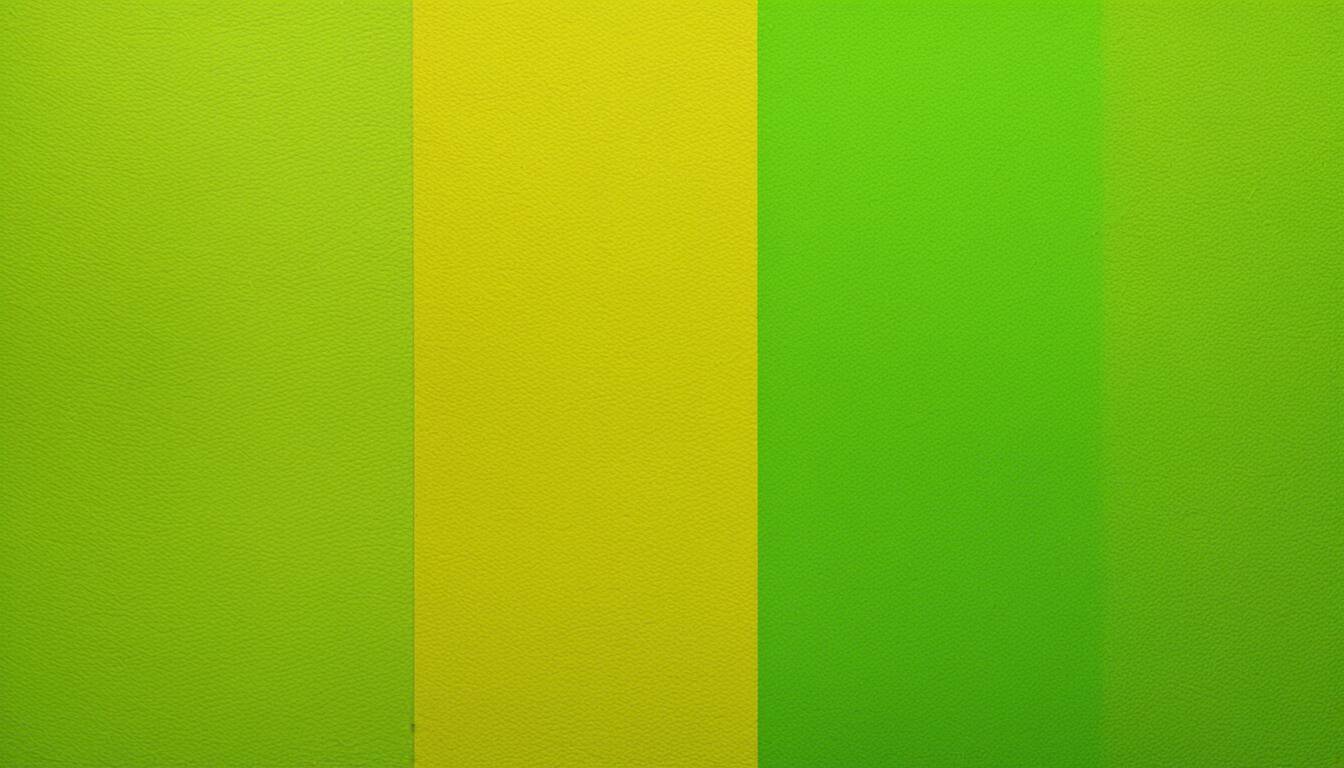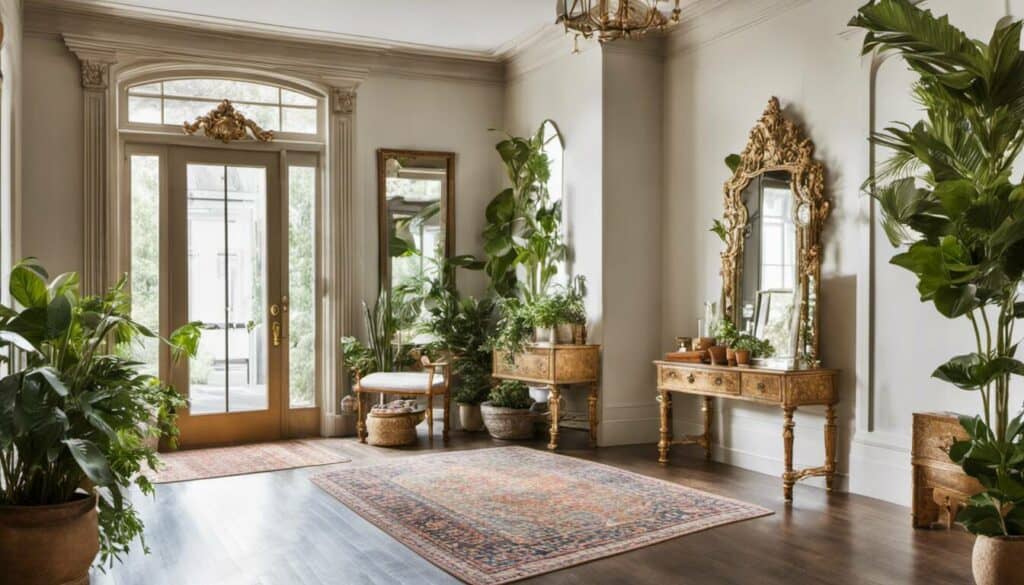Imagine this: after weeks of planning my dream interior, I finally painted the walls. But as the paint dried, I realized it wasn’t what I expected. That’s my experience. Let me share some simple insights into choosing wall colors and why I’ve decided to avoid certain hues. Join me on this journey through color choices!
Our website article, “The Wall Color I’ll Never Use Again,” is written by an experienced interior designer who recommends avoiding the color peach. While peach can be a lovely color when used correctly, it can be difficult to coordinate with other colors and often creates a dated or overly feminine look. Of course, personal taste is always a consideration in any design decision, but this article offers helpful advice to those looking for guidance on what may not work well in their space.
“A fundamental rule in design is to never be afraid of color, but one must tread careful pathways when deciding on wall colors. The one shade I’ve noticed that often proves challenging in various light conditions is neon- intense, unyielding and stark in its brightness. While bold choices can personalize your space, it’s crucial to remember that walls serve as the backdrop to your life, influencing your mood and comfort- subtlety and consideration in color choice pay off in the long run.”
Bernard Valerian, Interior Design Professor
Unfavorited Wall Shades in Interior Design
As an experienced interior designer, there are certain wall shades that I have encountered over the years that I would never use again. These colors, for various reasons, have earned themselves a spot on my “unfavorited” list. While personal taste may vary, it’s worth considering the following colors carefully before making your final decision.
One of the wall shades that has consistently disappointed me is a vibrant neon green. While it may seem like a bold and trendy choice, this color can quickly overwhelm a space and create an atmosphere that feels harsh and unnatural. It rarely complements other elements in the room, often clashing with furniture and decor.
Another color to be cautious of is a deep dark purple. While purple can be a beautiful and regal hue, opting for a shade that leans towards black can create a gloomy and oppressive ambiance. Dark purple tends to absorb light rather than reflect it, resulting in a visually heavy space that lacks brightness and energy.
Finally, let’s discuss a shade that has become quite common in recent years: pure white. While white is often considered a safe choice for walls, pure white can sometimes feel clinical and stark. It lacks warmth and depth, appearing flat and uninspiring. Consider opting for softer white tones or adding hints of color to bring life to your space.
- Choosing the right wall shade for a room is crucial in determining the overall ambiance. Interior designers advise that neon green, deep dark purple, and pure white are some of the colors that should be considered carefully before making the final decision. Neon green can be overwhelming and clash with other elements in the room; deep dark purple can create a gloomy atmosphere and lacks brightness and energy, while pure white can feel clinical and uninspiring. Consider softer white tones or adding hints of color to bring life to your space.
Factors that Contribute to Color Unpopularity
Understanding why certain wall shades fall out of favor can provide valuable insights when selecting the right color for your space. Here are some factors that contribute to color unpopularity:
Trendiness Over Time: Colors often go through cycles of popularity influenced by trends and design fads. What might be fashionable today could quickly become outdated tomorrow. It’s essential to choose colors based on their timeless appeal rather than short-lived trends.
Personal Associations: Individual experiences and cultural influences shape our preferences towards certain hues. Colors can evoke strong emotions and associations, and what may be pleasing to one person might elicit a negative reaction from someone else. Considering the emotional response a color evokes is crucial in creating a harmonious and comfortable environment.
Color Psychology: Different colors have psychological effects on us, impacting our moods, energy levels, and overall well-being. For example, intense or overly vibrant hues can be overwhelming, while cool tones can create a calming and serene atmosphere. Understanding the psychology behind colors helps in choosing shades that align with the desired mood of a space.
Lighting Conditions: The way light interacts with wall colors significantly affects how they appear in a room. Natural and artificial lighting sources can accentuate or dull the intensity of colors. It’s important to consider the orientation of your space, the amount of natural light it receives, and the type of artificial lighting fixtures before selecting a wall shade.
By considering these factors when choosing wall colors for your interior design projects, you can make informed decisions that result in spaces that are aesthetically pleasing and aligned with your personal style.
- According to a study by Zillow, homes with dark or style-specific wall colors, like slate gray or terracotta, sold for $1,100 less on average than homes with neutral colors such as beige or taupe.
- Paint Quality Institute research revealed that 58% of homeowners regretted not choosing a more neutral color palette and felt they had made a color choice blunder.
- Research by Dulux shows that approximately 42% of people worldwide identified a poorly chosen paint color as one of their biggest decorating regrets.
Color Combinations to Steer Clear From
When it comes to choosing colors for your walls, some combinations can turn out to be a design disaster. To avoid potential pitfalls, it’s important to steer clear from certain color combinations that clash or create an unpleasant visual impact. One example to avoid is combining bold, vibrant colors like neon green and hot pink, as they can overpower the space and create a chaotic atmosphere. Similarly, pairing cool tones like icy blue with warm tones like fiery red can create a discordant effect that is visually jarring.
Imagine walking into a room with lime green walls and bright orange furniture – it might feel overwhelming and hard on the eyes. On the other hand, combining too many neutral shades without sufficient contrast can result in a bland and uninspiring space.
To ensure harmony in your interior design, it’s essential to understand the guiding principles for selecting a wall color.
Guiding Principles for Picking a Wall Color
When choosing a wall color, several guiding principles can help you make the right decision. First and foremost, consider the purpose of the room and the mood you want to create. For example, if you’re aiming for a calming and peaceful atmosphere in a bedroom, opt for softer hues like blues or greens. In contrast, if you want to energize a workspace or exercise area, vibrant and invigorating colors like yellows or oranges may be more suitable.
Lighting is another critical factor to take into account. Natural light can significantly affect how colors appear in a room, so be sure to test paint samples under different lighting conditions throughout the day. Similarly, artificial lighting sources such as warm or cool-toned bulbs will also impact how colors are perceived.
Consider the existing elements in your space, such as furniture, flooring, and artwork. Ideally, your wall color should complement these elements rather than clash with them. Look for shades that coordinate well with the undertones and overall theme of your existing decor.
For instance, warm beige or earthy tones can harmonize beautifully with wooden furniture, while crisp white walls can provide a clean backdrop for vibrant artwork to stand out.
Lastly, don’t be afraid to experiment and try samples before committing to a whole room. Paint colors can appear differently based on lighting and the orientation of the space. By testing small areas, you can see how the color interacts with your particular environment and make an informed decision.
Now that we’ve explored color combinations to steer clear from and discussed guiding principles for picking a wall color, let’s dive into expert tips from interior designers who have mastered the art of creating beautiful and cohesive spaces.
Expert Tips from Interior Designers
When it comes to interior design, the choice of wall color plays a crucial role in setting the overall ambience of a space. To avoid design disasters and ensure harmonious living environments, it’s essential to gather insights from experts in the field. Professional interior designers have extensive experience working with various color palettes and are well-versed in the do’s and don’ts of wall color selection.
One expert tip often emphasized by interior designers is to consider natural light when choosing a wall color. Natural light can greatly impact how a color appears in a room. It’s important to test paint samples on different walls at different times of the day, observing how the colors change under varying lighting conditions.
Another valuable tip is to take into account the size of the space. Dark colors tend to make a room feel smaller, while lighter shades can create an illusion of more space. Understanding these effects helps in selecting the right color for each specific room and achieving the desired atmosphere.
It’s also worth noting that different individuals have varying perceptions of color and its psychological impact. Interior designers often recommend considering personal preferences and desired mood when making wall color decisions. For example, vibrant colors like red or yellow may energize and stimulate creativity, while softer tones like blue or green can evoke feelings of calmness and serenity.
Armed with expert tips on choosing wall colors thoughtfully, let’s now explore effective strategies for dealing with undesirable hues that have already been applied to our walls.
Dealing with Undesirable Wall Hues
Sometimes, despite careful consideration and best intentions, we find ourselves dissatisfied with the chosen wall color after it has been applied. Whether it’s due to lighting discrepancies or simply a clash with personal taste, there are ways to rectify this design dilemma.
One option is to embrace the power of paint once again. Repainting the walls in a new color that aligns better with your vision and preferences can instantly transform the space. However, before diving into a full repaint, it’s advisable to test the new color on a small section of the wall to ensure it addresses the issues you had with the previous hue.
Another approach is to use clever design tricks to divert attention away from the wall color. By incorporating eye-catching artwork, furniture arrangements, or statement pieces, you can create focal points that draw attention away from the disliked color. This technique allows you to redirect the focus towards elements that showcase your personal style and taste.
If repainting or design tricks aren’t viable options, utilizing various decorative elements can help mask or balance out an undesirable wall color. Employing large-scale curtains, tapestries, or removable wallpaper can effectively cover up unliked hues while adding texture and personality to the space.
Armed with valuable strategies for dealing with undesirable wall colors, you are now equipped to overcome design hurdles and create spaces that reflect your unique style and aesthetic preferences.
Possible Remedies and Alternatives for Unliked Colors
Let’s face it – sometimes we make mistakes when choosing wall colors. Perhaps you painted a room a shade of blue that ended up feeling too cold and unwelcoming. Or maybe that bold red you thought would be energizing turned out to be overwhelming. Don’t fret! There are several possible remedies and alternatives that can help salvage the situation and turn your design disaster into a harmonious space.
One option is to adjust the lighting in the room. Lighting plays a critical role in how colors are perceived. Warm, soft lighting can soften cool-toned colors, while cooler lighting can balance out warm tones. Consider experimenting with different light bulbs or installing dimmer switches to find the optimal lighting solution for your space.
Another remedy is to add complementary accents to counterbalance the overpowering color. For example, if you have a bright yellow wall that feels too intense, incorporating neutral-colored furniture or accessories can help tone it down and create visual harmony. By strategically placing objects with complementary or contrasting colors, you can draw attention away from the disliked wall color.
Let’s say you painted a room a shade of green that turned out to be too vibrant for your liking. To remedy this, you could introduce earthy browns or muted grays through furniture upholstery, curtains, or rugs. These neutral tones will help balance out the boldness of the green and create a more cohesive look.
If adjusting lighting or adding accents doesn’t mitigate the negative impact of the disliked color, then consider repainting a focal wall instead of repainting the entire room. This approach allows you to maintain some continuity with the existing color scheme while also introducing a new element that can transform the overall aesthetic. You could choose a complementary hue or opt for a more subtle shade within the same color family.
When all else fails, don’t be afraid to embrace wallpaper or decorative wall treatments as an alternative to repainting. Wallpapers come in a wide range of patterns, textures, and colors, allowing you to cover up the disliked color while adding visual interest and personality to your space. From subtle designs to bold prints, there is something to fit every style and taste.
Remember, each room and each person’s preferences are unique. What may work for one person may not work for another. While these remedies and alternatives can help rectify design disasters, it ultimately comes down to personal taste and experimentation.
Now that we’ve explored possible solutions for dealing with unliked wall colors, let’s shift our attention to preventative measures – how to choose the right wall color from the start and avoid these design disasters altogether.






On one occasion, I painted a room entirely in bright orange hoping it would add a jolt of energy, but the overwhelming color made the room feel closed-in and uncomfortably intense.
While bright colors can feel overwhelming in some rooms as Beatrix mentioned, they can also invigorate certain spaces when used tastefully, like my client’s basement turned into a vibrant playroom with a splash of cherry red, which was a success.
Just last year I’d repainted a client’s office in an attempt to boost productivity using a light shade of blue, since research indicates it engenders focus. However, they reported back complaining about the monotony and how uniformity was sapping their creativity instead.
While redecorating my guest room last summer, I took a gamble on an unusual shade of mustard yellow – surprisingly, it infused the space with a warmth that makes every guest remark on its cheery atmosphere!
The last time I redecorated my studio space, I thought choosing an aggressive cherry red tone would energize me. However, as soon as it fully dried, I regretted the decision for its overly intense vibe that disagreed with the calmness needed for creativity. To counteract that brash color choice, I had to spend extra on offsetting decor like cool-toned art and furniture. It was not only financially taxing but also consumed so much of my time!